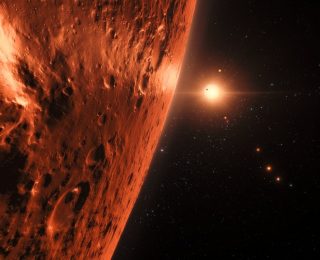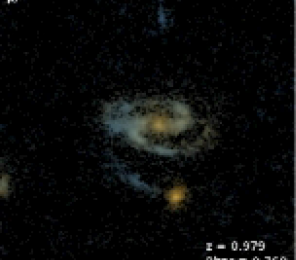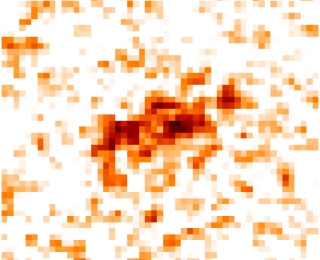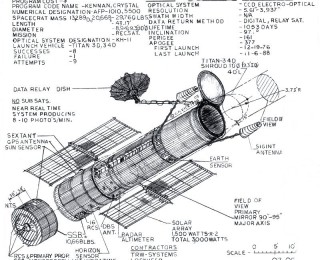
by Leonardo dos Santos | Sep 8, 2017 | Daily Paper Summaries
TRAPPIST-1 promises to be one of the best candidates for habitability in the solar neighborhood. Today we will see that the presence of a system-wide cloud of hydrogen could be traced to a history of water loss in the planets in this system.

by Mara Johnson-Groh | Sep 6, 2016 | Daily Paper Summaries
There she blows! A detective case tracking the motion of material ejected from a star to figure out when the star exploded.

by Becky Smethurst | Jan 23, 2014 | Daily Paper Summaries
Astronomers have long wished to probe the number of galaxies containing bar structures to ever increasing redshifts. This paper discusses the first results from the Galaxy Zoo Hubble classifications of galaxies out to redshifts of z = 1, in order to study how the fraction of galaxies containing a bar has changed over a cosmic time that has previously not been explored.

by Allison Strom | Feb 16, 2013 | Daily Paper Summaries
A team of astronomers working on the 3D-HST survey make use of the Hubble Space Telescope’s grism to observe star formation as a function of radius in a large sample of galaxies at intermediate redshift.

by Elizabeth Lovegrove | Jun 8, 2012 | Current Events
Today the National Reconnaissance Office (NRO) announced that it has given NASA not one but two fully-constructed space telescopes, roughly equivalent to Hubble with a wider field of view. The telescopes, which were offered to NASA about a year ago (a team of scientists has been considering whether to accept them in the meantime), come with all their hardware minus instruments – a total value to the agency of hundreds of millions of dollars plus years of lead time.
by Elisabeth Newton | Nov 23, 2011 | Daily Paper Summaries
Lensing occurs when the mass of a foreground object distorts and magnifies the light from a background galaxy or quasar, sometimes even creating multiple images. It probably isn’t a stretch to say that the neatest thing about lensing is that you can typically see two to four images of the same galaxy. But something else that’s cool is that these distant background objects are magnified, making it possible to study them in detail when otherwise they might not be seen at all: in this way, gravitational lenses act as natural cosmic telescopes.





